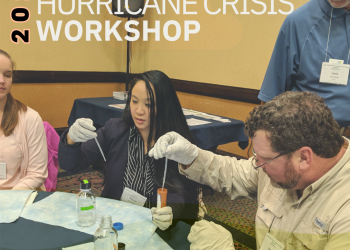Author: Bailey Stearns ([email protected]), U.S. Environmental Protection Agency (EPA) Office of Research and Development (ORD).
Chemical risk assessment is an applied discipline that aims to determine levels of human or ecological exposures to substances in environmental media (such as food, air, and water) that should not result in substantial risk of toxicity and compare them with actual exposure levels to determine the risk for human or ecological populations.
To ensure informed chemical safety decisions can be made about thousands of chemicals, decision makers and health professionals need a constantly evolving set of tools for quickly and efficiently evaluating chemicals of interest. EPA Office of Research and Development’s (ORD) online Computational Toxicology (CompTox) Chemicals Dashboard helps to advance these efforts.
What is the CompTox Chemicals Dashboard?
The Dashboard is a first-stop-shop for chemistry, toxicity, exposure, and bioactivity data that allows for searches based on chemical identifiers (e.g. names and CAS Registry numbers); product categories that chemicals are found in; pesticide codes; and assay and gene associations with the bioactivity data. The team of curators working on the chemicals data has continued to expand validation of the list of chemical identifiers associated with the almost 900,000 chemicals currently available in the Dashboard. The various lists of chemicals that are available as segregated sets includes chemicals in pesticides, tire crumb rubber, per- and polyfluoroalkyl (PFAS) chemicals, refrigerants, and a growing list of disinfectant by-products. Data in the dashboard is compiled from sources including EPA’s computational toxicology various research databases (e.g. ToxVal and ToxRef), EPA’s ECOTOX Knowledgebase, and several other public domain resources.

Before the CompTox Chemicals Dashboard was first released in March 2015, EPA had a suite of web applications including the ToxCast or Endocrine Disruptor Screening Program dashboards. These separate tools are now retired in favor of one single application to provide a seamless navigation experience for the user. Consolidating all the data into one tool also helps make sure that EPA’s scientists and programmers can focus on adding new data, functionality, and improved performance that is valuable to EPA and its stakeholders. Dr. Antony Williams, EPA chemist and project lead for the Dashboard, says that with each release new data are added and data quality continues to be elevated by repeated, rigorous curation processes. The 10th version of the existing Dashboard was released to the community in July 2020 and the data are not being updated further until the next release scheduled for Fall 2021, which will utilize a new data-hub-based architecture and user-interface design. Moving to this new architecture will enable further growth and expansion of the Dashboard in support of chemical risk assessment activities.
How can the Dashboard be used by public health professionals?
The Dashboard is increasingly becoming a valuable resource for those tasked with the evaluation of potential human health risks associated with chemical exposures. Specifically, the Dashboard can be used to locate information for conducting comprehensive literature searches, assemble information on chemical properties, and identify health information not available in the public domain. The dashboard is an ideal place to source data associated with the safety of chemicals, different types of toxicity data, and initiate a search for data associated with chemical exposure.
There is broad range of quantity and quality of data on legacy and emerging chemicals found in commerce and environmental media. As such, development of comprehensive, centralized, and flexible data platforms and tools for diverse fit-for-purpose applications are vital for advancing the science of risk assessment. “We remain focused on delivering EPA data to the community and bringing that data into a coherent application,” says Dr. Michael DeVito, Director of ORD’s Chemical Characterization and Exposure Division.

How does the Dashboard support the Toxic Substances Control Act?
EPA scientists are working to ensure the Agency’s implementation of the Toxic Substances Control Act (TSCA) is supported by sound science. Our scientists are providing support for several important TSCA activities including the development of New Approach Methods to reduce the use of animals and revolutionize chemical testing. To help ensure transparency and provide access to relevant chemical information, EPA scientists are integrating chemical information into the Dashboard that can be used to identify chemicals most in need of further testing which can help reduce the use of animals in future chemical testing.
Additional Resources
Users of the Dashboard can explore the wealth of data and features available in the CompTox Chemicals Dashboard with these instructional videos narrated by EPA scientists.






